"Dubrovnik is one of the most popular Mediterranean tourist destinations, added to the UNESCO list of World Heritage Sites in recognition of its outstanding medieval architecture and fortified old town.
The city dates back to the 7th century, when the town known as Ragusa was founded by refugees from Epidaurum (Cavtat from the Middle Ages) and under the protection of the Byzantine Empire and later under the sovereignty of the Republic of Venice. Between the 14th and 19th centuries, Dubrovnik ruled itself as a free state. The prosperity of the city was historically based on maritime trade. As the capital of the maritime Republic of Ragusa, it achieved a high level of development, particularly during the 15th and 16th centuries, as it became notable for its wealth and skilled diplomats.
Much of the city was damaged when a devastating earthquake hit in 1667. During the Napoleonic Wars, Dubrovnik was occupied by French Empire forces, and then the Republic of Ragusa was abolished and incorporated into the Napoleonic Kingdom of Italy and later into the Illyrian Provinces. In the early 19th to early 20th century, Dubrovnik was part of the Kingdom of Dalmatia within the Austrian Empire. Dubrovnik then became part of the Kingdom of Yugoslavia after WWI, and it was incorporated into its Zeta Banovina in 1929, before becoming part of the Banovina of Croatia upon its creation in 1939. During World War II, it was an Axis puppet, the Independent State of Croatia, before being reincorporated into a larger independent Yugoslavia post war.
In 1991, during the Croatian War of Independence, Dubrovnik was besieged by the Yugoslav People's Army for seven months and suffered significant damage from shelling. After undergoing repair and restoration works in the 1990s and early 2000s, it re-emerged as one of the Mediterranean's top tourist destinations."
The city dates back to the 7th century, when the town known as Ragusa was founded by refugees from Epidaurum (Cavtat from the Middle Ages) and under the protection of the Byzantine Empire and later under the sovereignty of the Republic of Venice. Between the 14th and 19th centuries, Dubrovnik ruled itself as a free state. The prosperity of the city was historically based on maritime trade. As the capital of the maritime Republic of Ragusa, it achieved a high level of development, particularly during the 15th and 16th centuries, as it became notable for its wealth and skilled diplomats.
Much of the city was damaged when a devastating earthquake hit in 1667. During the Napoleonic Wars, Dubrovnik was occupied by French Empire forces, and then the Republic of Ragusa was abolished and incorporated into the Napoleonic Kingdom of Italy and later into the Illyrian Provinces. In the early 19th to early 20th century, Dubrovnik was part of the Kingdom of Dalmatia within the Austrian Empire. Dubrovnik then became part of the Kingdom of Yugoslavia after WWI, and it was incorporated into its Zeta Banovina in 1929, before becoming part of the Banovina of Croatia upon its creation in 1939. During World War II, it was an Axis puppet, the Independent State of Croatia, before being reincorporated into a larger independent Yugoslavia post war.
In 1991, during the Croatian War of Independence, Dubrovnik was besieged by the Yugoslav People's Army for seven months and suffered significant damage from shelling. After undergoing repair and restoration works in the 1990s and early 2000s, it re-emerged as one of the Mediterranean's top tourist destinations."
Our walking tour of the city begins:
The focus of today is exploring the walled fortressed portion of old Dubrovnik.
Near the main entrance into the walled city are remembrances of the shelling during the tumultous times of the 1990's. The diagram illustrates where shells and missiles struck within the city walls.
A curious head decorating a downspout exit.
"P" shaped entrances/windows found in numerous little shop spaces - allows a larger door and window in a narrow facade.
The main central street, originally a canal.
"Robotic " bell gongers preserved in a museum. Working replicas are installed in the tall bell tower.
Gerri peers out from the small entrance to a dungeon.
"Dungeon dweller".
Artifacts from the museum.
We visit the maritime museum.
Weather forecasting equipments.
We take a break, enjoying the cool spaces, before heading back out into the heat.
An elegant staircase entrance, and Gerri signing the visitor's ledger in a restored synagogue.
Beer break!!!
Now visiting a cultural museum, with many artifacts and displays featuring the daily life of yesterday.
Now onto the tour taking us along the tops of the city walls.
Looking down the central main street, again, once a canal.
A "Where's Waldo (Gerri)?" photo - the zoom feature of our point-and-click digital camera isn't too shabby.
We sure were able to get an expanded perspective of the old city from the tops of the fortressed walls.
Locals and tourists recreating on perches outside the walls, and over the sea.
We did not eat here - we're sure it's good, but pricey.
Even pricier eats, location, location, location.
Back down to ground level, someone found a time portal and crossed through it.
A shop capitalizing on Game of Thrones fame, for which Dubrovnik provided some filming settings.
June 27
Today we have to just do it, climb the hiking trail high to above the city, in the heat.
The trail has that ancient look about it.
The day gets hotter, coming out from the shady part of the trail.
The gondola way to the top, for those not needing a good hot workout.
We get good views of the old walled city.
Well exposed now, gotta get this hike done and away from the heat.
The big boats have to anchor out and take launches in to explore the old city.
Finally, coming back from the wilderness, and getting closer to our lodging's A.C. Phew!











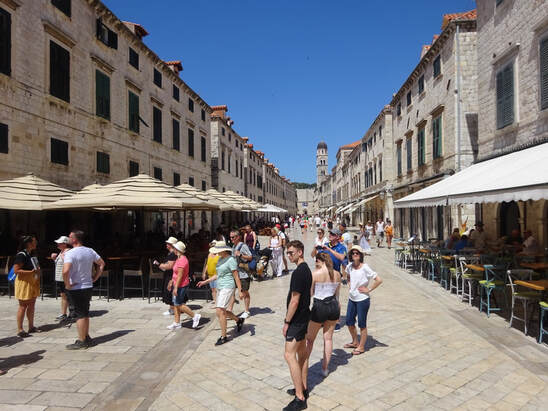







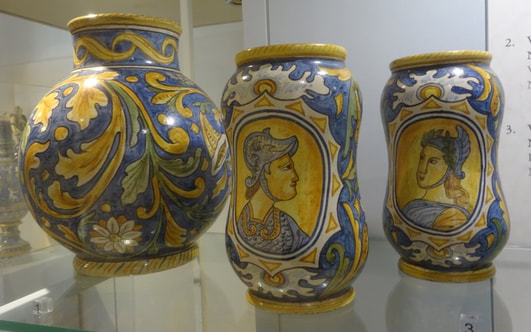












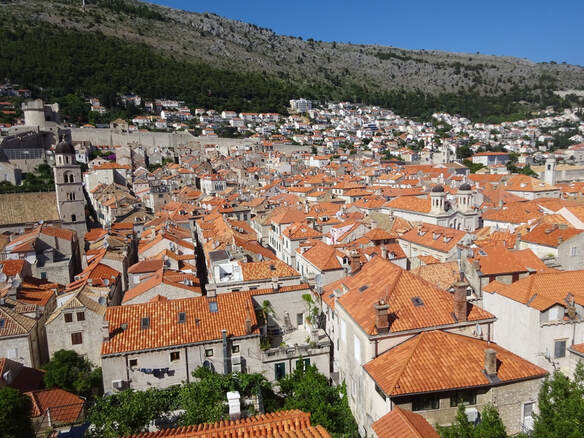
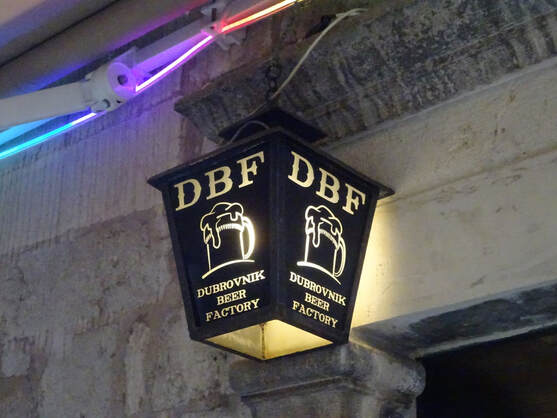


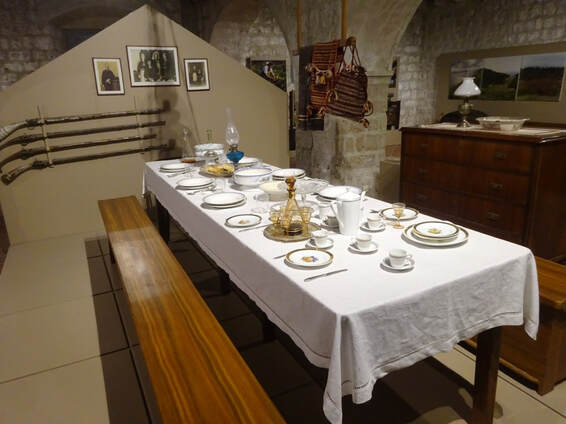



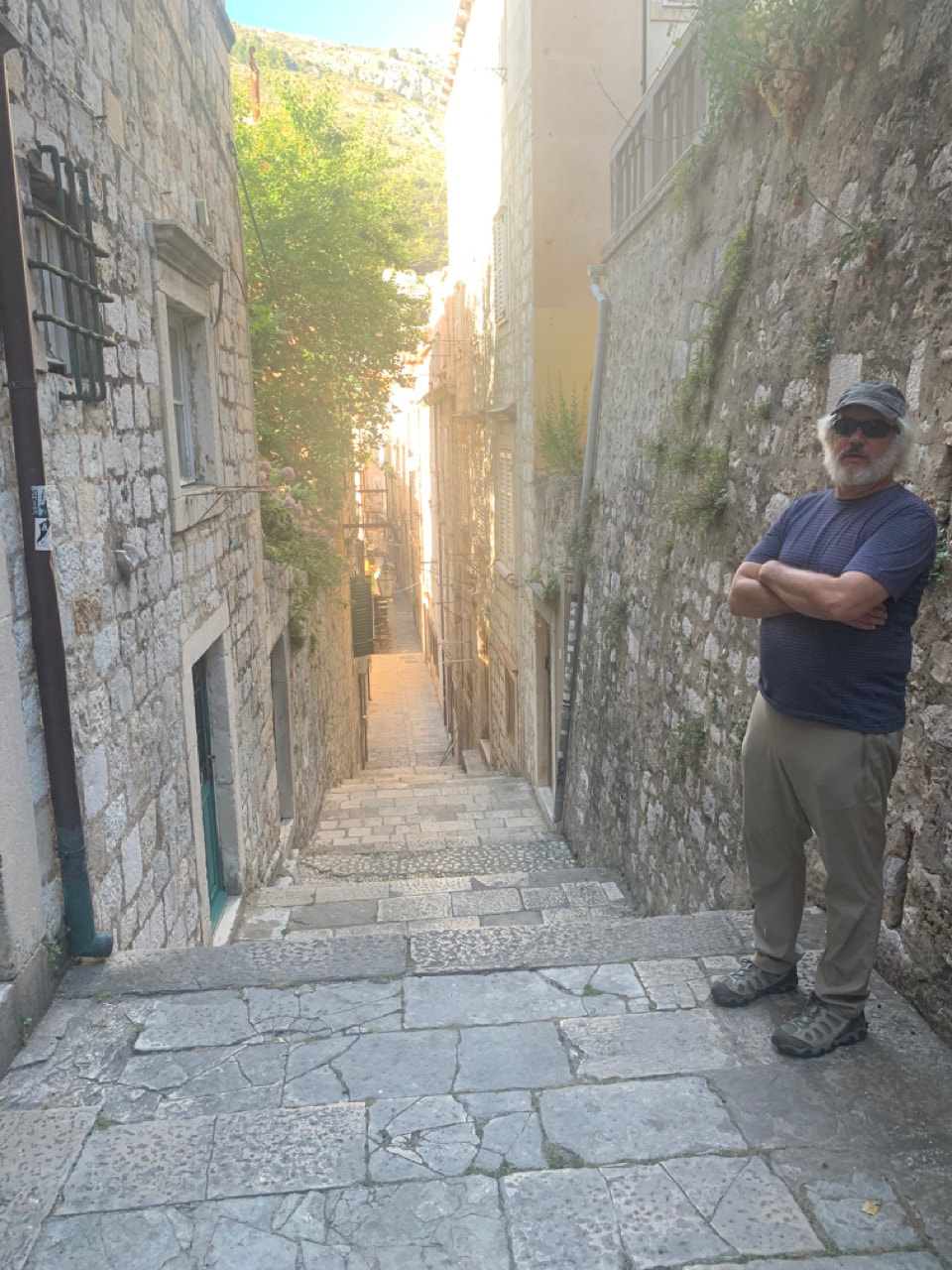
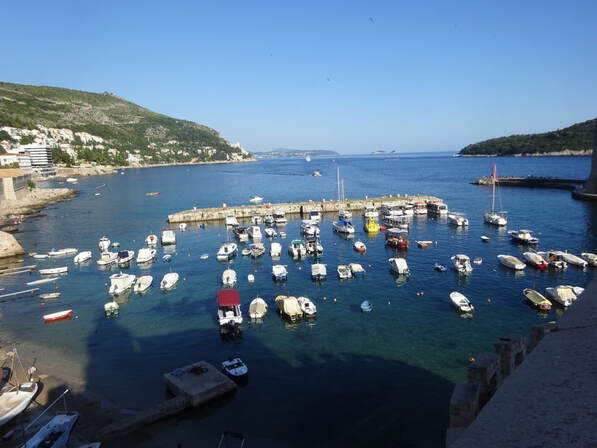




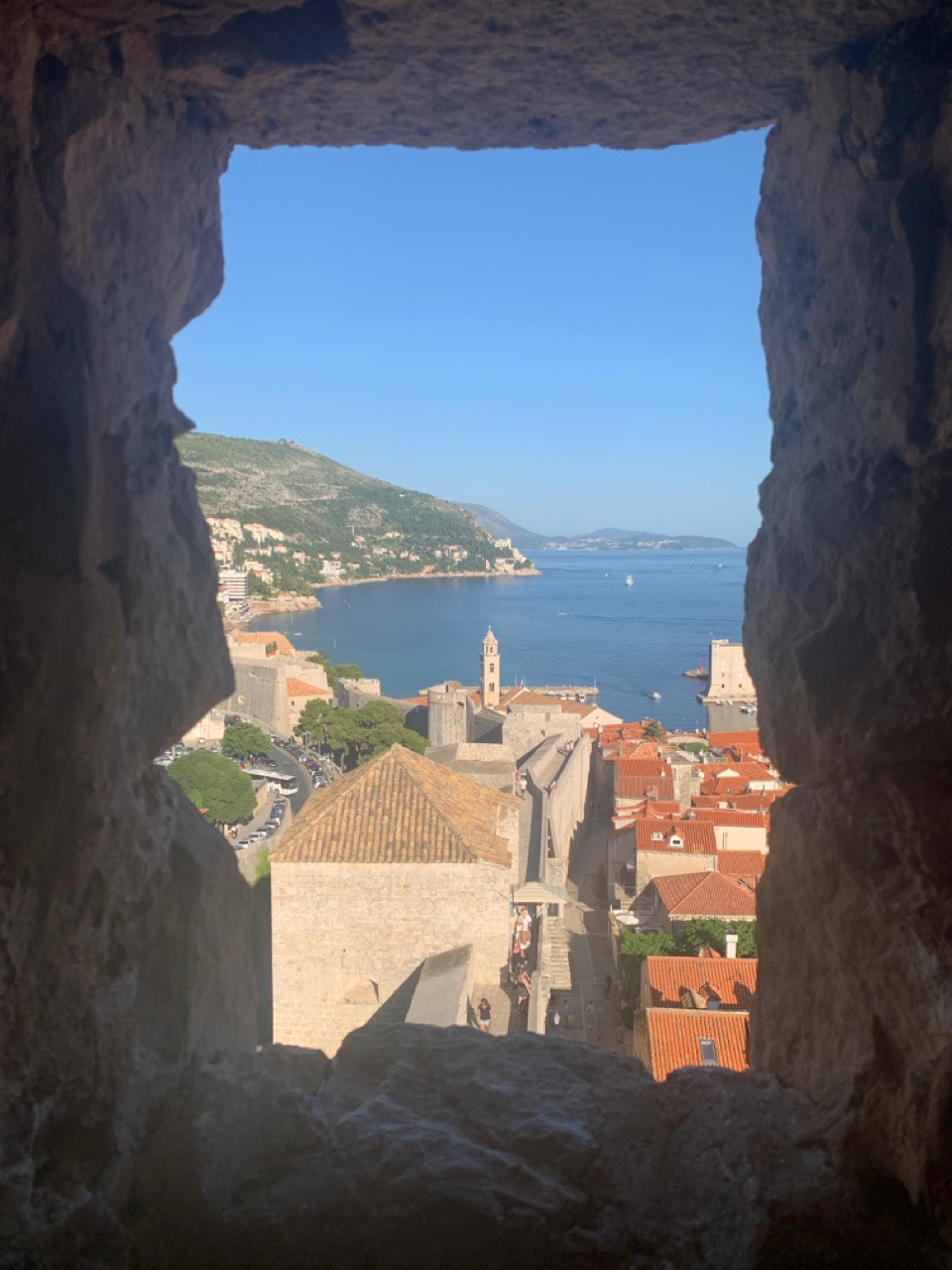





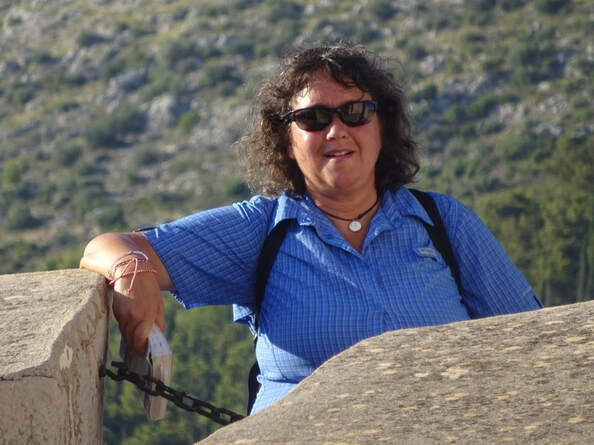

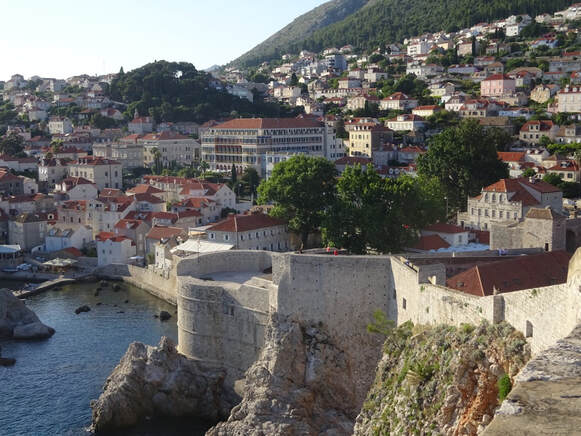
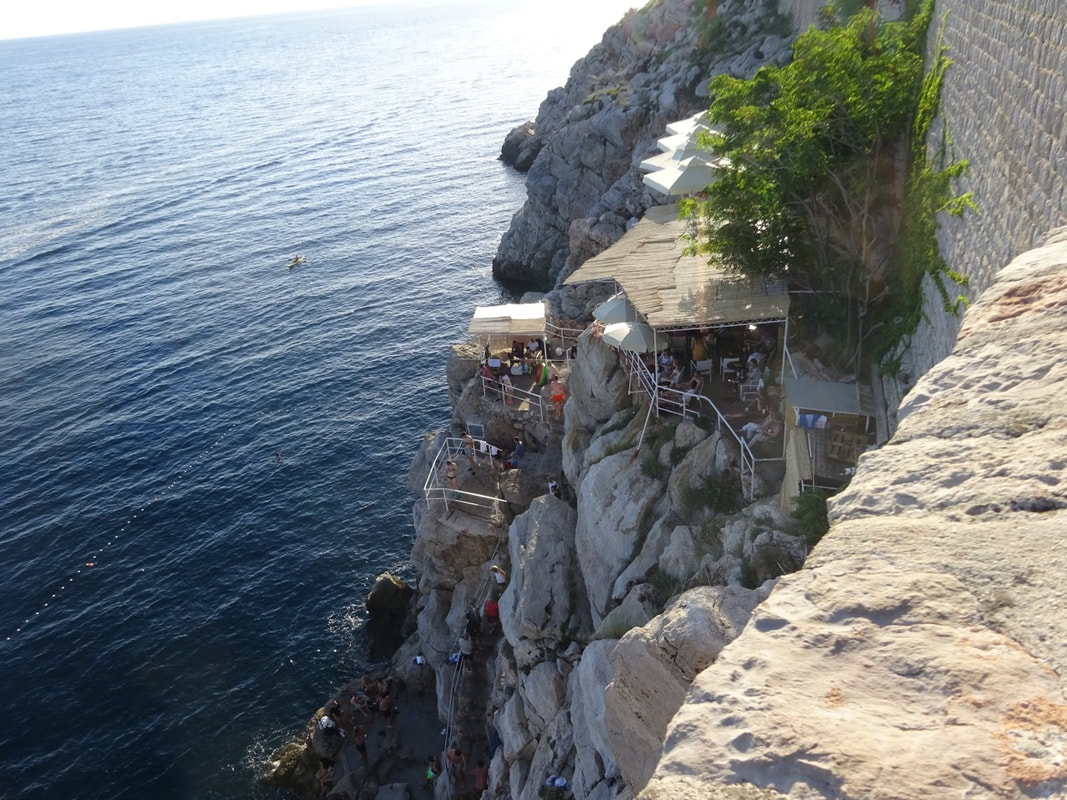

















 RSS Feed
RSS Feed
